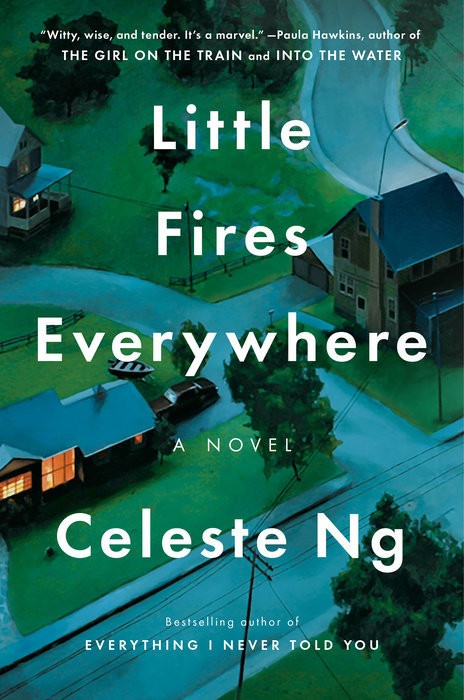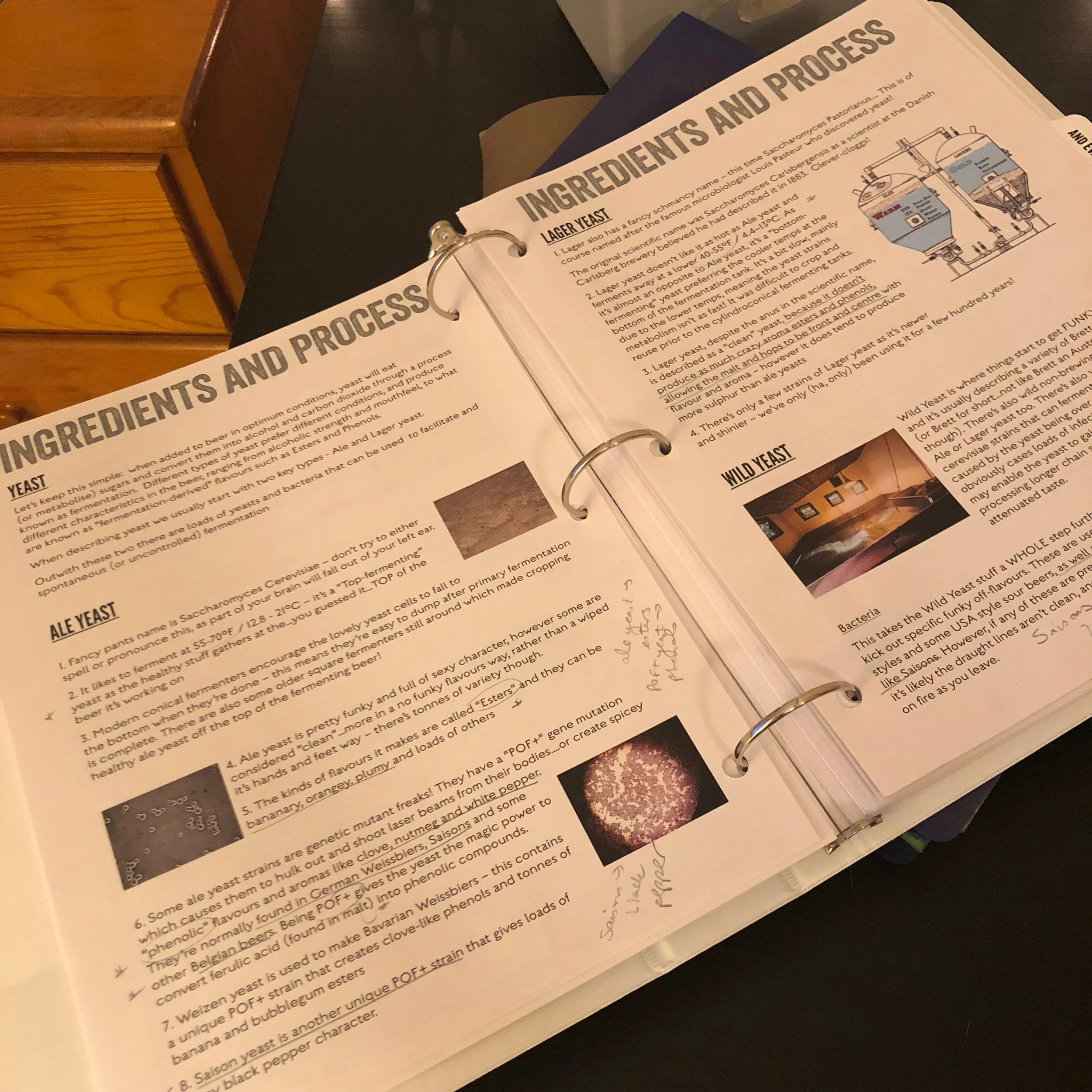Little Fires Everywhere and Great Lakes' Burning River Pale Ale
The Book
Celeste Ng completed her MFA in fiction at the University of Michigan while I was doing my PhD there. I don’t know that I ever met her in person, but she was familiar to me, and so I’ve been glad to see her find success with her second novel, Little Fires Everywhere.
The book covers a lot of ground, but it hinges on the collision of two very different families in 1990s suburban Cleveland. One family, the Richardsons, is mainstream and wealthy like most of the residents of Shaker Heights. The other family, the Warrens, is the opposite: an artist mother and her daughter, nomadic, settling in a rental 1-bedroom apartment owned by the Richardsons. The Warrens are Mia and Pearl (the latter a nod to The Scarlet Letter, I assume, as Mia has kept Pearl’s paternity from her and moves from town to town, always inhabiting its social outskirts). The Richardsons include Ivy-bound Lexie, the dashing athlete Trip, artistic Moody, and the misfit youngest daughter, Izzy.
The story opens with an arson: “Everyone in Shaker Heights was talking about it that summer: how Isabelle, the last of the Richardson children, had finally gone around the bend and burned the house down” (1). Firemen deduce that it was started by “little fires everywhere.” The rest of the story jumps back a year and leads up to the arson and the Warrens’ midnight flight from Shaker Heights.
Ng is a deft omniscient narrator, and the most powerful effect of her point of view is its social commentary on conflicts of race and class in the suburban Midwest at the end of the 20th century. The “little fires” of the title take on many valences across the novel; they’re not just the sources of arson, but the sources of social tension that will erupt across the book - and in the America that its readers now inhabit.
The Beer
Cleveland is central to Little Fires Everywhere - it’s almost as important to the plot as the city is to Great Lakes Brewing Company, which recently celebrated its 30th anniversary. Great Lakes led the vanguard of Ohio’s craft-beer renaissance, starting with a little 7bbl kit and a gold medal at GABF for their Dortmunder Gold, won in 1990, right around when Little Fires Everywhere takes place. Their neighborhood and their city have been core values since the beginning.
Great Lakes is a perfect brewery to pair with a novel set in Cleveland. An even more apt match? Little Fires Everywhere and Great Lakes’ Burning River Pale Ale.
Great Lakes names lots of its beers after key players or events in Cleveland’s history. Their amber lager is named for Eliot Ness, the city’s “Safety Director” back in Prohibition’s heyday (the irony). Their Imperial IPA is named for Cleveland’s Great Lake: Lake Erie Monster IPA. They call their oatmeal stout Ohio City. In a clever play on Berliner Weiss, theirs becomes Cleveliner Weiss.
Burning River, too, alludes to an infamous event for the city of Cleveland: the Cuyahoga River Fire. If you’re not from Ohio, you may be unfamiliar with this epic bit of history. Back in 1969, Cleveland made news when the Cuyahoga River was so polluted that it caught fire. You got that right: a body of water went up in flames. And this wasn’t even the first time the river had caught fire - throughout the twentieth century, it had been so polluted that it had caught fire a number of times. In fact, the picture that made the cover of Time magazine wasn’t even from the 1969 fire; it was shot in 1952. (The Cleveland Historical Society will tell you more about the fire here.)
The fire in 1969, though, got picked up by Time magazine and so became national news. Ultimately, that fire was influential in the passing of the Clean Water Act in 1972 - and even the founding of the EPA in 1970. So something good came of the fires and their national publicity. I don’t want to give too much away, but the idea of fires being restorative rather than destructive is key to Little Fires Everywhere, too. To soothe Izzy after a loss, Mia says, “Sometimes, just when you think everything’s gone. You find a way. […] Like after a prairie fire. I saw one, years ago, when we were in Nebraska. It seems like the end of the world. The earth is all scorched and black and everything green is gone. But after the burning the soil is richer and new things can grow” (294).
Great Lakes is doing some pretty exemplary work nourishing new growth in Cleveland’s environment and community. For example, Burning River is not only a delicious beer but also an environmental foundation. Per Great Lakes:
The Burning River Foundation is dedicated to improving, maintaining and celebrating the vitality of our regional freshwater resources. Our vision is to establish Northeast Ohio as the recognized environmental leader dedicated to the sustainability of its high quality freshwater resources. The Burning River Foundation embraces the following Core Values: Ecological Conservation Environmental Protection Education/ Public Involvement Established in 2007 as an outgrowth of the continued success of the Burning River Fest, we have awarded almost $680,000 to local non-profit organizations.
And that’s just one facet of Great Lakes’ “Brewing Good” program. They also installed a 62-panel photovoltaic array on the roof of their brewery for solar power. They sponsor local service projects throughout their entire distribution footprint. They got in on the local food movement early, establishing two farms - one of them, Ohio City Farm, a 6-acre urban farm smack in the middle of Cleveland - to provide vegetables and herbs for the taproom as well as hops for limited-release beers. They sponsor a number of arts initiatives in Cleveland.
Every brewery should be aiming for this kind of stewardship in their community. The names of Great Lakes’ beers let you know that they value their city, and they really walk the walk in their initiatives to nourish their city’s regrowth. Their classic Pale Ale, Burning River, goes down even smoother when you know that it’s backed by a foundation to protect Cleveland’s rivers and lake. That knowledge may make it just a bit easier to swallow the loaded social and racial inequality with which Little Fires Everywhere confronts us.
The beer is a classic. Brewed since 1990, it won silver at 1993’s GABF. Since then, Great Lakes has updated the recipe to include locally grown hops and malt. Always looking out for the community! The Centennial and Cascade hops here are delicious - just the right notes of pine, backed up by a little citrus. At 45 IBUs, though, that hop bitterness is well balanced, like a pale ale should be.
Cheers, Great Lakes! Keep doing what you’re doing.










